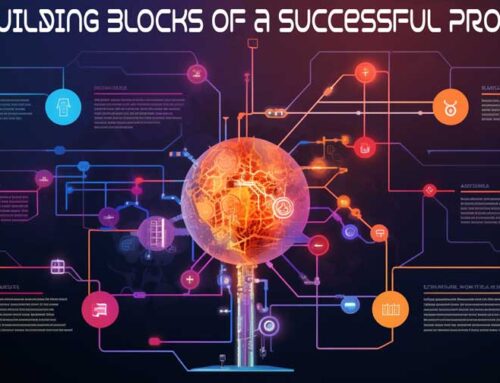Creating catchy titles and descriptions for YouTube videos can feel like a daunting task, but don’t worry—AI is here to help! Imagine having a simple, automated way to generate captivating content that aligns with your unique tone of voice.
Today, we’ll dive into a straightforward process to automate your video transcript to title and description workflow using AI tools like Claude and ChatGPT, with seamless integration into Make.com and Airtable. Sounds complicated with all the talk about APIs and JSON, right? Fear not, as Claude will do most of the heavy lifting.
Ready to learn how? Let’s get started!
| Topic | Key Points |
|---|---|
| Introduction to Automation | Using AI for YouTube titles and descriptions, simple process, and benefits. |
| Setting Up Airtable | Video URL management, essential columns, and ensuring video accessibility. |
| AI Integration | Using AI tools like Claude, crafting personalized prompts, and handling multiple accounts. |
| Advanced Automation | Exploring API integrations, refining processes, and enhancing productivity. |
Introduction to Automation
In today’s digital age, crafting compelling YouTube titles and descriptions is an art form. However, many creators struggle with this task. With the rise of AI tools, we can now automate this process and make it more efficient and tailored to our unique style.
Here’s a peek into the steps involved:
- Reference Airtable: Begin by listing the URLs of videos you want to transcribe.
- Transcript Conversion: Use AI tools to generate transcripts.
- Title and Description Generation: AI creates catchy titles and descriptions.
- Output to Airtable: Automatically populate your Airtable with the new data.
This four-step process allows you to focus more on creating content while AI takes care of the repetitive tasks. Have you ever wished you had more time to focus on creating rather than the logistics of uploading?
https://youtu.be/NXTxyjNsIE0
Streamlining the Workflow
Let’s dive deeper into the process, starting with Airtable. Imagine having a table where each row represents a video URL and the data you need. Here are the key components:
- Video URL Column: Store your video URLs here.
- Transcript Column: Auto-populate with transcripts from YouTube.
- Generated Title and Description: AI-generated content will be saved here.
- Timestamps: Keep track of when data was added or modified.
This setup ensures your workflow is smooth and organized. By automating tasks, you’re not just saving time; you’re making your content strategy more effective.
Setting Up Airtable
Airtable is your command center for managing YouTube video data. To start, you’ll need to create a table with specific columns that will handle various data inputs and outputs related to your video content.
Essential Columns
Here’s a look at the essential columns you’ll need:
- Video URL: This column contains the URLs of the videos you plan to process. Make sure your videos are set to public or unlisted, as private videos may block API access.
- Transcript: This will automatically pull transcripts from YouTube for each video.
- Generated Title and Description: AI tools like Claude will populate these fields with catchy content.
- Generated Date and Last Modified Date: These columns help track when each video was processed.
This setup enables you to track and manage all relevant information effectively. It’s like having a digital assistant handling all the tedious work for you. Are your videos ready for this level of automation?
Ensuring Video Accessibility
To make the process seamless, ensure your videos are accessible and free of copyright restrictions. This involves:
- Validation: Ensure that YouTube has validated your videos.
- Public or Unlisted Settings: Ensure your videos are set to public or unlisted. Private videos can be problematic due to API restrictions.
- Batch Processing: Consider batch processing your videos to save time and streamline your workflow.
Having a well-organized system will allow you to quickly adapt and adjust to new content needs or strategies. By setting up a clear process, you’re paving the way for a more efficient content management system.
AI Integration
With your Airtable setup, it’s time to bring AI into the equation. By using AI tools like Claude or ChatGPT, you can generate personalized titles and descriptions that align with your brand voice. These tools are like your creative sidekick, helping you craft engaging content.
Crafting Personalized Prompts
The key to successful AI integration is creating effective prompts. Here’s how:
- Identify Key Elements: Determine what makes your titles and descriptions unique.
- Develop Custom Prompts: Use AI tools to write prompts that reflect your tone and style.
- Experiment and Refine: Continuously tweak your prompts to improve the output.
Creating effective prompts is an art form. It’s about knowing your audience and crafting messages that resonate. How can AI enhance your creative process?
Handling Multiple Accounts
If you’re managing multiple YouTube accounts, AI can help streamline your workflow. Here’s how to make it work for you:
- Create Unique Prompts: Develop tailored prompts for each account to reflect its distinct voice.
- Organize Content: Use Airtable to keep track of content across accounts.
- Adapt Quickly: With AI, you can swiftly adapt to different audiences and styles.
With AI as your ally, managing multiple accounts becomes less of a headache and more of an opportunity to expand your reach and engage with diverse audiences.
Advanced Automation
Now, let’s take automation to the next level. By exploring advanced API integrations, you can refine your workflow even further and save valuable time.
Exploring API Integrations
APIs are powerful tools that can enhance your automation process. Here’s what you need to know:
- Setup Your API: Use platforms like Google Cloud to integrate APIs.
- Streamline Workflows: APIs can automate tasks like pulling transcripts and updating Airtable.
- Customize Solutions: Tailor API settings to fit your specific needs.
By leveraging APIs, you can create a more dynamic and responsive content strategy. How can APIs improve your current workflow?
Refining Processes
Continuous improvement is the key to success. Here are some ways to refine your processes:
- Feedback Loop: Create a system for reviewing and approving AI-generated content.
- Experimentation: Test new prompts and techniques to find what works best.
- Adaptation: Stay flexible and adapt to changes in technology and audience preferences.
With a mindset of continuous improvement, you can ensure your content remains fresh and engaging. How can you refine your processes to achieve your goals?
Final Thoughts
Incorporating AI into your YouTube strategy can be a game-changer. By automating tasks like title and description generation, you can focus more on creating and engaging with your audience. Here’s a quick recap:
- Set Up Airtable: Organize your video data with essential columns.
- Integrate AI Tools: Use tools like Claude and ChatGPT for personalized content.
- Explore Advanced Automation: Leverage APIs to refine and enhance your processes.
AI isn’t just a tool; it’s a partner in your creative journey. By embracing this technology, you can unlock new possibilities and elevate your content strategy.
Final Thoughts
Ready to level up your AI game and give your business the boost it needs?
Join me, Ryan Perry, for live, bi-weekly online training sessions where you’ll get hands-on instruction and personalized feedback. Learn how to effectively implement AI tools and strategies to boost your business efficiency and growth. Sign up for AI training and let’s rock this AI journey together!







Leave A Comment